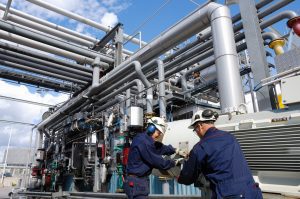As part of my job I meet with mining executives all around the world to understand what they need to improve their operational efficiency, and without exception they know they have to digitize, but many are still unclear how to approach their digital transformation. They’ve read articles and case studies about it, they’ve heard consultants and vendors talk about it, but they still find things to be overwhelming and complicated.
They wonder, “What should be our final vision? Where should we start? And what will be the ROI?” A thoughtful article by McKinsey entitled, “The cornerstones of large-scale technology transformation” was recommended to me recently by our Pacific Zone IOT Director, Jack Krutak, and it captures the state of mind in the industry today:
These are big topics with lots to think about, from the C-level on down to Operations and Technology leaders. In my opinion, I think a key point to keep in mind is that, although we are in a technology revolution, we can’t ignore the question of how can it improve our competitive advantage, people and processes. All of it needs to be aligned with the technology of digitization in order to be successful.
Someone who did this exceptionally well was Captain James Tiberius Kirk of the starship USS Enterprise. OK, he was not a real person, but looking at some old science fiction might help us to imagine the value of some of the key pieces of the digital transformation available today and how it benefited the performance of his crew and ship.
- Integrated Operations
Aboard the Starship Enterprise, most of the on-board action took place on the bridge of the ship, where command, navigation, science, communications and helm operations were physically co-located. Extensive computer aided support enabled the command crew to work as a team and focus on strategic and creative solutions to problems while the low-level details were handled by automatic and autonomous systems, much like Integrated Operations Centre in mining today.
- Situational Awareness
Skip forward to the command of one of Kirk’s successors, Jean-Luc Picard, and you will see that the Enterprise was updated with a new bridge computer system. “The original design concept was influenced by a request from Gene Roddenberry that the instrument panels not have a great deal of activity on them. This minimalized look was designed to give a sense that the technology was much more advanced than in the original Star Trek.” This is a similar concept to the idea of situational awareness today that is enabled through advanced analytics and operational dashboards. Check out these 3 blogs on the state of the art in Situational Awareness.
- Virtual Training Simulators
The Enterprise also had an immersive virtual reality environment called the Holodeck. It was mainly used for recreation, but I wonder if it had a training function? With the need to train a new generation workforce and the short half-life of jobs and technology, a training simulator is vital in obtaining and maintaining a skilled workforce. A perfect example of how simulators can be used can be seen in these videos on the CAT website demonstrating the use of haul truck simulators. But processing simulators are now also readily available and are just as critical as mobile fleet performance if you are chasing recovery or efficiency through the processing plant. This white paper entitled “The Benefits of using Dynamic Simulation and Training Systems for expanding Operator Knowledge and Understanding” explores them in more detail.
- Augmented Reality
Jean-Luc Picard’s blind team member, Geordi La Forge, wore a visor that enabled him to see even more than with normal sight – “to see energy phenomena visible to the naked human eye while expanding the wearer’s full perceived spectrum from 1 Hz — 100 PHz.” Sound familiar? We might want to think about Augmented Reality as something like this – technology that enables us to “see” hidden data about real wold objects. It is the flip side of the Integrated Operations Centre, giving field workers extra visibility when standing right in front of the equipment and systems they need to interact with.
It’s really amazing when you think about the parallels between the science fiction of Star Trek, a show which debuted in 1966(!), and the reality of the state of the art in technology today. In fact, I think I might go rewatch Avatar or The Matrix now to see what other technologies we might expect in the “next generation” of solutions for the mining industry.
In the meantime, live long and prosper my friends.


Conversation
Nice post. Thanks for sharing such type of valuable article. Keep sharing this type of informative post.